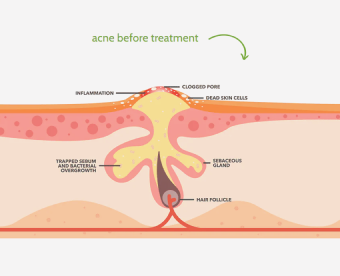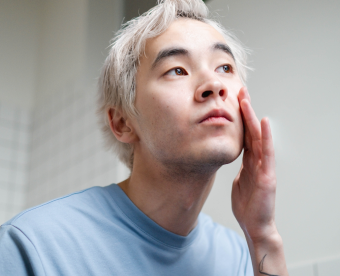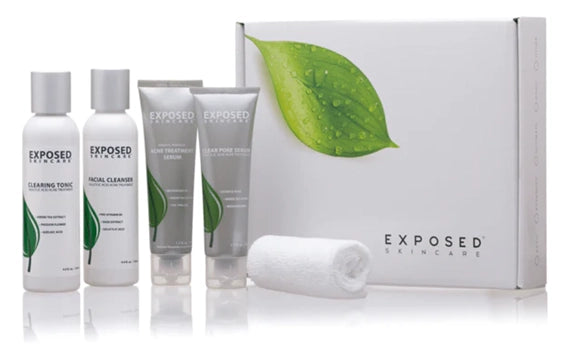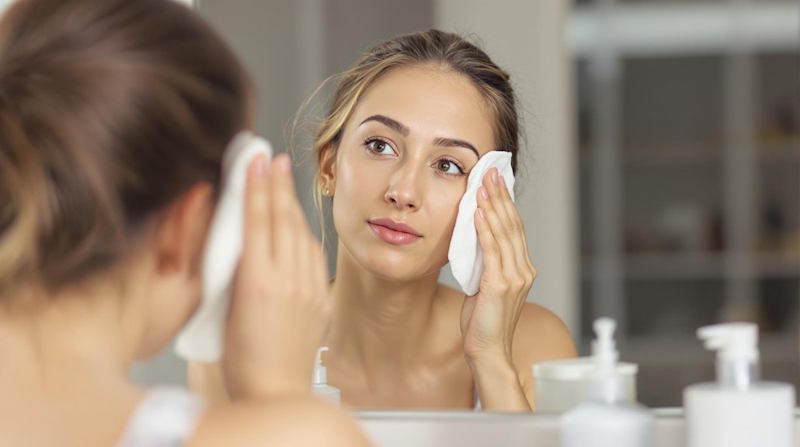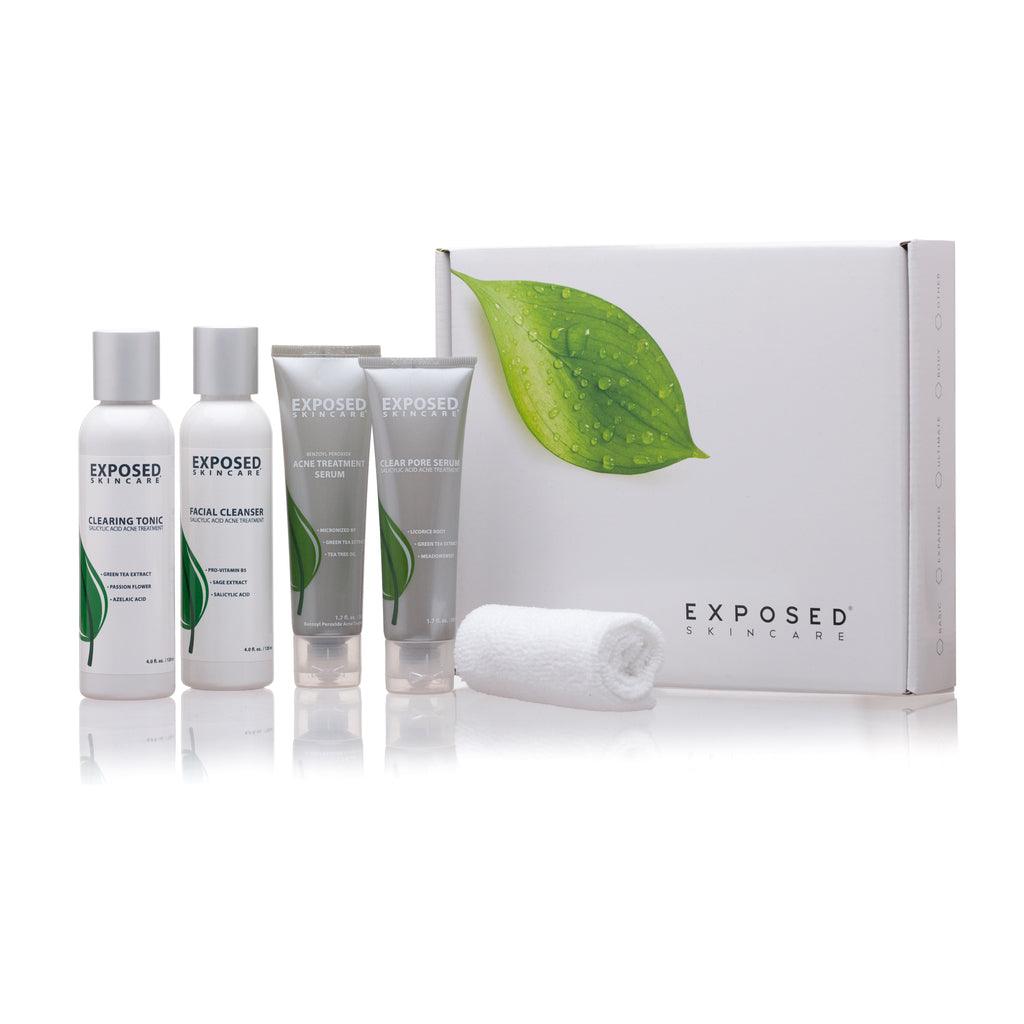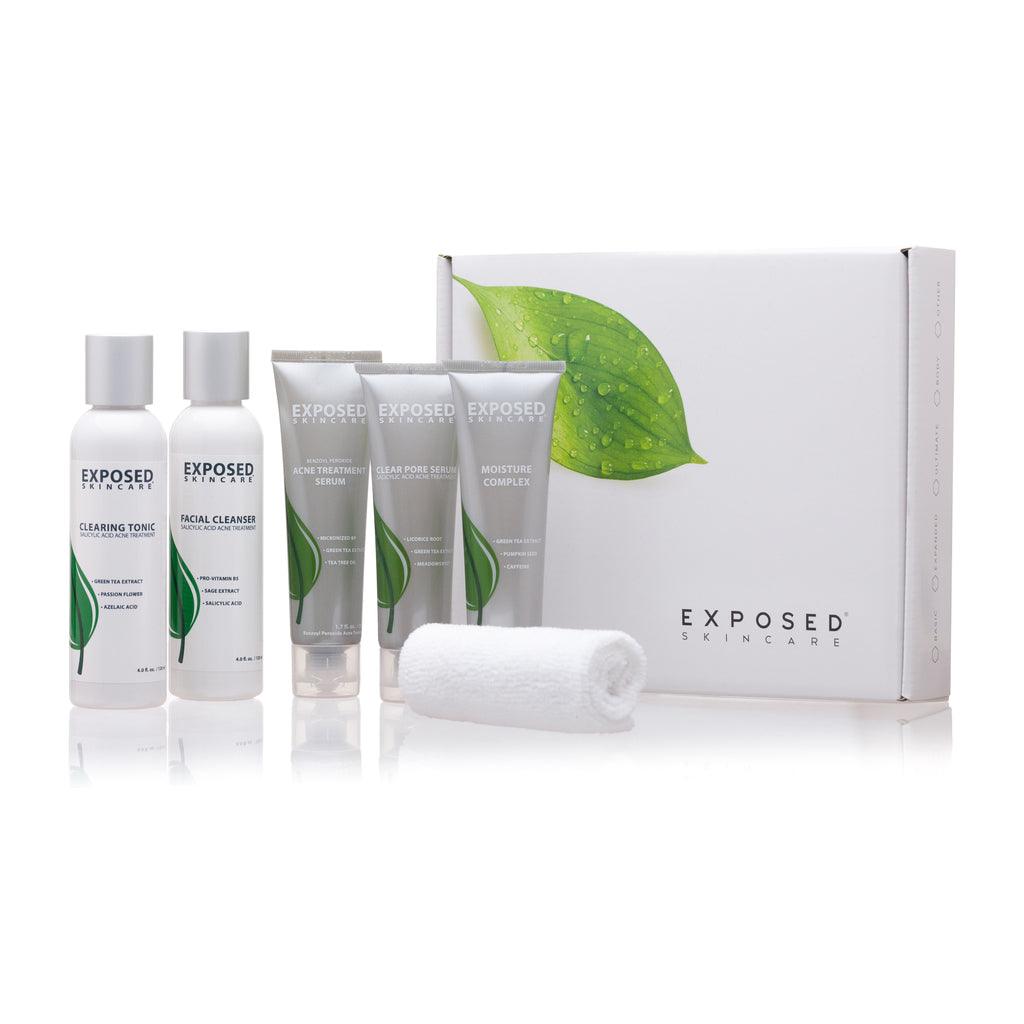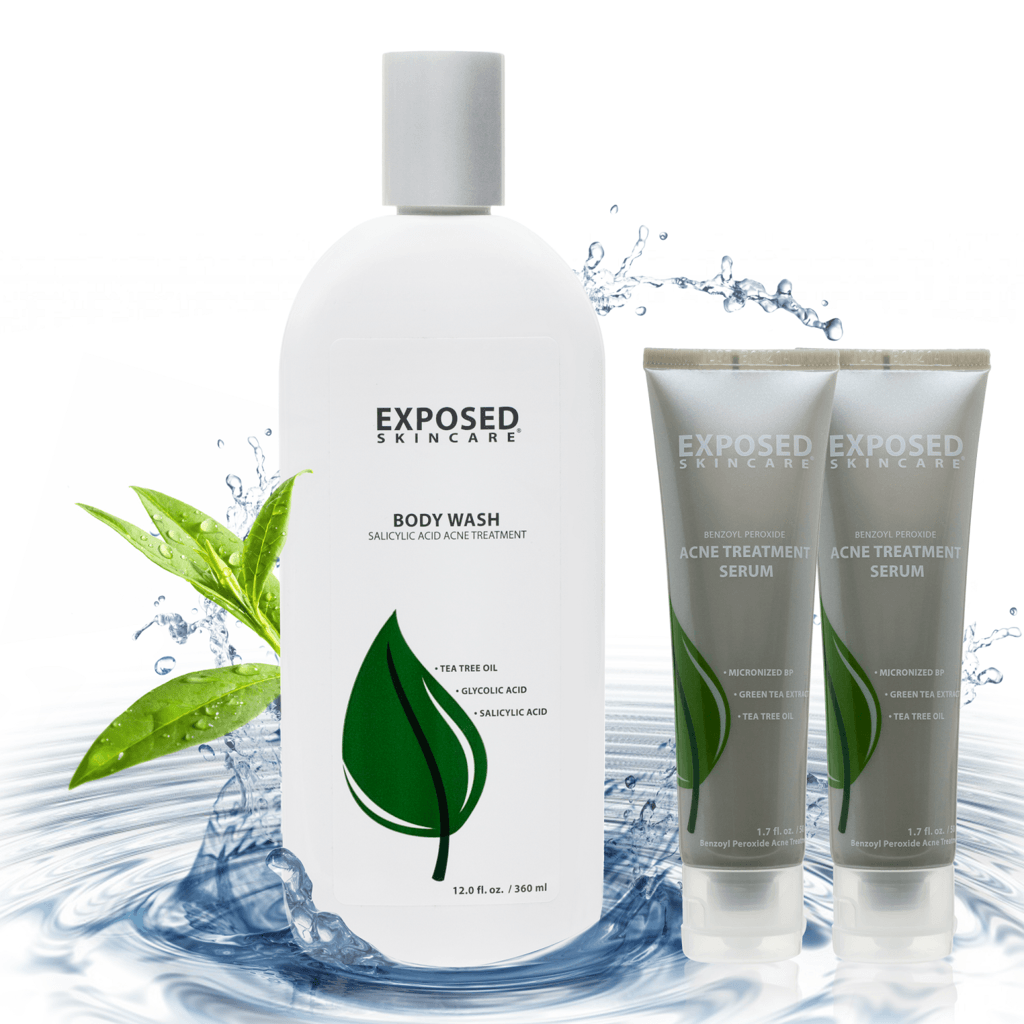Acne treatments have come a long way from Egyptian honey masks to modern science. Early methods only tackled one acne cause, like bacteria, while ignoring others. The game-changer came in the 1990s when experts realized effective treatment means targeting all four acne drivers simultaneously: oil, bacteria, inflammation, and dead skin cells. That's why Exposed Skin Care's multi-ingredient system still outperforms competitors today—they cracked the code while others keep missing pieces.
Biggest Takeaways
- Acne treatments evolved from ancient remedies using honey and sulfur to modern scientific approaches targeting multiple causes.
- Benzoyl peroxide revolutionized acne care in the 1930s by killing bacteria and remains effective nearly a century later.
- The 1990s shifted toward combination therapy addressing all four acne triggers: bacteria, inflammation, oil, and clogged pores.
- Many multi-ingredient systems sacrificed quality for marketing, creating an effectiveness gap in the market.
- Exposed Skin Care's balanced formula simultaneously targets all acne causes with clinical ingredients and natural extracts.
Ancient Acne Remedies: What Our Ancestors Got Right

Four ancient civilizations unknowingly got parts of the acne puzzle right, even without microscopes or modern science.
Looking back at the history of acne, Egyptian skincare routines weren't just for show—they slathered honey and sour milk on breakouts, accidentally harnessing antibacterial properties and natural exfoliants.
Those crafty Egyptians weren't just building pyramids—their honey-milk facials were fighting bacteria before bacteria was even a word.
Meanwhile, the Romans were basically running ancient spas, using sulfur baths to knock out bacteria and calm angry skin.
Chinese medicine practitioners blamed "internal heat" (eye roll at the terminology, but they weren't totally wrong about internal factors).
And Ayurvedic doctors connected the dots between digestion and skin—pretty savvy for people without Instagram skincare influencers.
Each civilization tackled one piece of the acne puzzle—bacteria, inflammation, or internal triggers—but none had the complete solution.
They were onto something, but missing the full picture.
The Birth of Modern Acne Science (1900-1950)
The early 1900s marked the awkward teenage years of acne treatment—complete with growing pains and questionable decisions.
If you thought your DIY face masks were rough, imagine what your great-grandparents endured: cryotherapy (literally freezing your face), crude extractions that left scars, and sulfur masks that smelled like rotten eggs. Yikes.
The late 1940s finally brought some science to the table when antibiotics entered the chat, actually targeting acne-causing bacteria.
Dr. Papantoniou notes this was the first time treatments addressed what was happening beneath the skin.
These early approaches were basically the flip phone of skincare—revolutionary for their time but laughably primitive by today's standards.
They focused on nuking bacteria without addressing the other acne drivers like excess oil, clogged pores, and inflammation.
The Chemical Revolution: When Benzoyl Peroxide Changed Everything

While scientists were busy figuring out the bacteria puzzle, a little-known compound was about to crash the skincare party and change everything.
Enter benzoyl peroxide in the 1930s—the rockstar molecule that flipped acne treatment on its head. This powerhouse didn't just mask breakouts; it straight-up murdered the bacteria causing them by flooding pores with oxygen (turns out, acne bacteria hate oxygen—who knew?).
What made BP truly revolutionary was its multi-tasking magic: it kills bacteria, exfoliates dead skin, and unclogs pores simultaneously.
No wonder dermatologists still reach for it nearly a century later.
The FDA stamp of approval led to an explosion of gels, creams, and cleansers featuring this ingredient—making it the backbone of acne treatments that actually work instead of just looking pretty on your bathroom shelf.
Multi-Ingredient Systems: Why Combination Therapy Became the Gold Standard
By the late 1990s, dermatologists finally admitted what acne sufferers had known all along—single-ingredient treatments were basically playing whack-a-mole with breakouts.
The science finally caught up to reality: acne isn't just one thing going wrong, so why treat it with just one thing? Combo therapy became dermatology's golden child as research showed that hitting multiple acne triggers simultaneously—excess oil, bacteria, inflammation, and clogged pores—delivered dramatically better results.
You'd clear up faster and stay clear longer when treatments worked together. No more "this month's miracle ingredient" letdowns.
While derms were busy publishing papers on this breakthrough, brands scrambled to create multi-ingredient systems. Most either skimped on quality or jacked up prices to ridiculous levels—until Exposed arrived with its science-plus-nature approach that didn't require a second mortgage.
The Four Drivers of Acne: Why Most Traditional Treatments Fall Short

For decades, dermatologists and skincare companies have been selling us half-truths about acne—focusing on just one villain in a four-part drama playing out on our faces.
Here's the real deal: acne isn't just about bacteria or oil—it's a perfect storm of four interconnected factors.
Most treatments bomb because they're one-trick ponies. That benzoyl spot treatment? It's fighting bacteria while ignoring the clogged pores feeding them. That fancy oil-control cleanser? Great for sebum, useless against inflammation.
The science is clear: you need to hit all four drivers simultaneously—excess oil, clogged pores, bacterial overgrowth, and inflammation.
When traditional treatments only target one or two factors, you're basically playing whack-a-mole with your breakouts. No wonder your bathroom cabinet's a graveyard of half-empty "miracle" products.
Exposed Skin Care's Scientific Breakthrough: Attacking All Four Acne Factors
Enter Exposed Skin Care—the scientific game-changer that finally connects all the dots in acne treatment.
While other brands are still pushing their one-trick pony solutions (hello, harsh benzoyl-only products), Exposed takes a smarter approach by targeting all four acne drivers simultaneously.
-
Their formula combines clinical-strength benzoyl peroxide to kill bacteria without the pizza-face redness.
-
Salicylic and glycolic acids team up to unclog your pores (not just surface-level stuff).
-
Green tea and tea tree extracts regulate oil production without turning your face into the Sahara.
-
Passion flower and aloe extracts calm inflammation, so you're not trading zits for irritation.
Unlike those sketchy DIY hacks or overpriced luxury brands, Exposed gives you the full package—science plus botanicals—backed by a one-year guarantee that actually means something.
Real Results: Why 400,000+ Users Choose Exposed's Complete System Today
Four hundred thousand people can't be wrong—or can they? In this case, the hype actually checks out. Exposed's loyal following isn't just another bandwagon; it's built on visible results that happen surprisingly fast.
What sets this system apart isn't just throwing random ingredients together. It's the smart science-meets-nature combo that tackles acne from all angles without turning your face into a peeling disaster zone.
Users report clearer skin within weeks—not the "maybe someday" timeline most acne products quietly hide behind.
See real results in weeks, not vague someday promises that traditional acne products conveniently never specify.
The secret sauce? Education plus action. Instead of mysterious potions with empty promises, Exposed equips you with actual knowledge about your skin while delivering ingredients that work.
It's like having a dermatologist friend who keeps it real.
Frequently Asked Questions
How Did People Get Rid of Acne in the Past?
You've tried what ancient people did: honey, sulfur, lactic acid from milk, herbs, and later antibiotics. These single-ingredient solutions tackled only one acne driver, limiting their effectiveness.
What Was the Treatment for Acne in the 1970S?
Like knights with limited weapons, you'd have battled acne using benzoyl peroxide, topical antibiotics, early retinoids like Retin-A, and oral tetracycline—all single-factor solutions that couldn't tackle acne's four drivers simultaneously.
What Was the Acne Medicine in the 80S?
In the 80s, you'd find Accutane revolutionizing severe acne treatment, alongside topical antibiotics and benzoyl peroxide. These options worked, but couldn't match Exposed's thorough approach targeting all four acne drivers.
How Did People in the 1800S Not Have Acne?
Like unicorns, acne-free 1800s folks are mostly myth. You'd find they did have acne—they simply managed with simpler diets, outdoor living, and natural remedies like honey and sulfur.
Putting It All Together
You're finally free from futile fads and phony fixes. After centuries of skin suffering, Exposed's science-backed system tackles all four acne factors simultaneously—something those trendy single-ingredient solutions never could. While history's been harsh on acne sufferers, you don't have to keep cycling through one-trick treatments. With 400,000+ clear-skinned customers backing it up, you've found what actually works. End of story.

